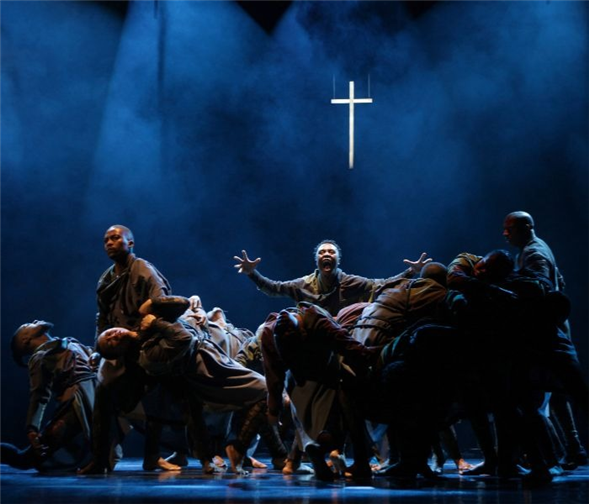Translate Page

Gregory Vuyani Maqoma's singular Cion comes to The Joyce Theater
---
Most choreographers who've set dances to Maurice Ravel's Boléro lean into its sensuality and drama. But when South African choreographer Gregory Vuyani Maqoma first heard the iconic orchestral piece, he interpreted it in a different way.
"It felt like a lament," he says. Moreover, "its repetitive and circular nature is very much in line with an African aesthetic. We tell stories sitting in a circle, and we go through hours and hours of repeating movement and song."
For his latest creation for his Johannesburg-based Vuyani Dance Theatre, Maqoma used Boléro and Zakes Mda's 2007 novel Cion, about a professional mourner exploring the history of American slavery, for inspiration. The resulting work, Cion: Requiem of Ravel's Boléro, a potent blend of movement and live a cappella singing, runs at The Joyce Theater January 15 to 18 as part of the Prototype Festival, which showcases innovative opera-theatre productions.
While Cion is certainly a dance piece, Maqoma says it's also a kind of "African opera. Every word that is being sung means something. Audiences may not understand the exact meaning of the words, but for sure they understand the intentions and the emotions."
For the music, Maqoma worked with his frequent collaborator, composer Nhlanhla Mahlangu, to create a vocal score modeled after Boléro that's sung in three African languages by an Isicathamiya quartet, who join the nine dancers on stage.
For the story, which is set in a graveyard, Maqoma looked to the novel Cion's narrator Toloki, whose unconventional vocation resonated with the choreographer. "He's someone who goes around to funerals, helping people to mourn the dead," Maqoma explains. "Events that have been taking place globally—the wars and how people have been dying in large numbers—made me realize that death is no longer a natural phenomenon. We are getting so accustomed to death because it's something that we experience on a daily basis. That made me really want to pause and think about how we have all been turned into professional mourners."
As Maqoma and Mahlangu developed the work, they incorporated the cast's thoughts into the libretto. "The whole ensemble—singers and dancers—sat around for hours talking about death," Maqoma says. "Their stories are embedded in the songs."
When Cion was performed last September in Johannesburg as part of Vuyani Dance Theatre's 20th anniversary celebration, Maqoma took note of all the violence being reported in the news, especially in South Africa. "There have been issues around women and children not being safe in our country," he says. "Every time I revisit the work to get it ready for performance, somehow I want the voices to be bigger, I want the movements to be bigger, because I feel the message needs to be amplified."
As a young dance student, Maqoma spent a year in Belgium training at the Performing Arts Research and Training Studios, run by Anne Teresa De Keersmaeker, the lauded contemporary choreographer making her Broadway debut with the current revival of West Side Story. He says that formative experience helped give him a new perspective on his homeland.
"It allowed me to look at South Africa from the outside, and ask questions about displacement and identity," he says. "It demystified the idea that anyone who comes to Europe to learn becomes a representative of European culture. Soon afterward, I created my company to build a home where I can express myself without fear."
---
Susan Reiter regularly covers dance for TDF Stages.
Top image: Cion: Requiem of Ravel's Boléro. Photo by Siphosihle Mkhwanazi.
TDF MEMBERS: Go here to browse our latest discounts for dance, theatre and concerts.